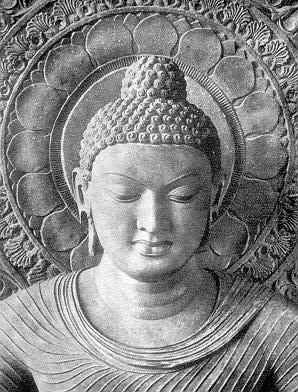DHAMMAPADA

The Dhammapada is a versified Buddhist scripture traditionally ascribed to the Buddha himself. It is one of the best-known texts from the Theravada canon.
The title, Dhammapada, is a compound term composed of dhamma and pada, each word having a number of denotations and connotations. Generally, dhamma can refer to the Buddha’s “doctrine” or an “eternal truth” or “righteousness” or all “phenomena”; and, at its root, pada means “foot” and thus by extension, especially in this context, means either “path” or “verse” (cf. “foot (prosody)”) or both. English translations of this text’s title have used various combinations of these and related words.
According to tradition, the Dhammapada’s verses were spoken by the Buddha on various occasions. Most verses deal with ethics. The text is part of the Khuddaka Nikaya of the Sutta Pitaka, although over half of the verses exist in other parts of the Pali Canon. A 4th or 5th century CE commentary attributed to Buddhaghosa includes 305 stories which give context to the verses.
Although the Pāli edition is the best-known, a number of other versions are known:
- “Gāndhārī Dharmapada” – a version possibly of Dharmaguptaka or Kāśyapīya origin in Gāndhārī written in Kharosthi script
- “Patna Dharmapada” – a version in Buddhist Hybrid Sanskrit, most likely Sammatiya
- “Udānavarga” – a seemingly related Mula-Sarvastivada or Sarvastivada text in
- 3 Sanskrit versions
- a Tibetan translation, which is popular in traditional Tibetan Buddhism
- “Mahāvastu” – a Lokottaravada text with parallels to verses in the Pāli Dhammapada’s Sahassa Vagga and Bhikkhu Vagga.
- “Fajiu jing” – 4 Chinese works; one of these appears to be an expanded translation of the Pali version; this has not traditionally been very popular.
Comparing the Pali Dhammapada, the Gandhari Dharmapada and the Udanavarga, Brough (2001) identifies that the texts have in common 330 to 340 verses, 16 chapter headings and an underlying structure. He suggests that the three texts have a “common ancestor” but underlines that there is no evidence that any one of these three texts might have been the “primitive Dharmapada” from which the other two evolved.
The Dhammapada is considered one of the most popular pieces of Theravada literature. A critical edition of the Dhammapada was produced by Danish scholar Viggo Fausbøll in 1855, becoming the first Pali text to receive this kind of examination by the European academic community.
423 verses in 26 chapters
The Pali Dhammapada contains 423 verses in 26 chapters (listed below in English and, in parentheses, Pali).
I. The Twin-Verses (Yamaka-vaggo) (see excerpt below)
II. On Earnestness (Appamāda-vaggo)
III. Thought (Citta-vaggo)
IV. Flowers (Puppha-vaggo)
V. The Fool (Bāla-vaggo)
VI. The Wise Man (Paṇḍita-vaggo)
VII. The Venerable (Arahanta-vaggo)
VIII. The Thousands (Sahassa-vaggo)
IX. Evil (Pāpa-vaggo)
X. Punishment (Daṇḍa-vaggo) (see excerpt below)
XI. Old Age (Jarā-vaggo)
XII. Self (Atta-vaggo)
XIII. The World (Loka-vaggo)
XIV. The Buddha — The Awakened (Buddha-vaggo) (see excerpt below)
XV. Happiness (Sukha-vaggo)
XVI. Pleasure (Piya-vaggo)
XVII. Anger (Kodha-vaggo)
XVIII. Impurity (Mala-vaggo)
XIX. The Just (Dhammaṭṭha-vaggo)
XX. The Way (Magga-vaggo) (see excerpt below)
XXI. Miscellaneous (Pakiṇṇaka-vaggo)
XXII. The Downward Course (Niraya-vaggo)
XXIII. The Elephant (Nāga-vaggo)
XXIV. Thirst (Taṇhā-vaggo) (see excerpt below)
XXV. The Mendicant (Bhikkhu-vaggo)
XXVI. The Brāhmana (Brāhmaṇa-vaggo)




